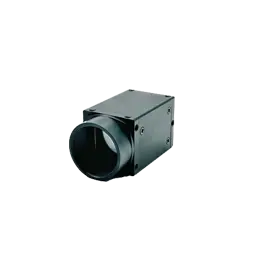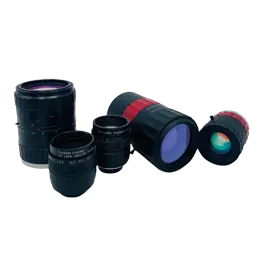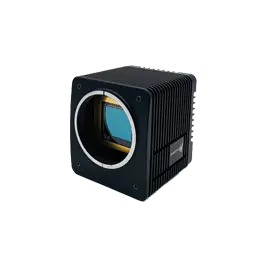
Short-wave infrared (SWIR) spectroscopy primarily records the absorption phenomenon resulting from the non-harmonic vibration of molecules, where molecules absorb energy during the transition from the ground state to higher energy levels due to molecular vibrations,This spectral range typically falls between 1000 and 2526 nm. Within this range, it predominantly records the harmonic and combination frequency absorptions of vibrations associated with hydrogen-containing groups X-H (X=C, N, O).Different functional groups (such as methyl, methylene, benzene rings, etc.) or the same functional group in different chemical environments exhibit noticeable differences in wavelength and intensity of near-infrared absorption. This is because different chemical environments affect the molecular vibration modes, leading to changes in the position and intensity of absorption peaks.
The SWIR spectroscopy system is an instrument designed for acquiring short-wave infrared spectra. It can employ various technologies to capture images in different spectral segments under spectral resolution and analyze images within characteristic spectral ranges.

Fig1:SWIR spectroscopy imaging system with Grating spectroscope
Below are some common technologies used in SWIR spectrometers:
- Fixed-wavelength filters: Specific filters are used to select particular wavelength ranges, obtaining spectral information within those ranges.
- Grating dispersion: Utilizing the dispersion effect of a grating, light of different wavelengths is dispersed at different angles, and a detector is used to acquire spectral information at various wavelengths.
- Fast Fourier Transform: Applying the principles of Fourier transform, the light signal is converted into a frequency domain signal, obtaining spectral information.
- Acousto-optic tunable filter(AOTF): Using acousto-optic effects to adjust the filter's transmitted wavelength range by changing the sound wave frequency, enabling spectral analysis at different wavelengths.
- Pixel-level array spectrometer sensor: Utilizing a pixel-level array spectrometer sensor allows simultaneous acquisition of spectral information at multiple wavelengths, improving data collection efficiency.
SWIR spectroscopy imaging system combines the characteristics of NIR spectroscopy and imaging systems. It enables high-precision spatial resolution for SWIR spectral detection, acquiring multi-band image data with narrow bandwidths. This system provides rich spectral information, aiding researchers in material analysis and detection. Through data analysis, we can understand the molecular structure and chemical properties, and it has widespread applications in various fields such as moisture distribution, food safety, biomedical research, material sorting, resource recycling, mineral identification, and more.

Non-destructive real-time monitoring of crop moisture status is crucial for precise irrigation and water-saving production. This monitoring can highlight the moisture content of plants or the distribution of moisture within the plant. In infrared images, water exhibits significant absorption in the wavelength range of 1,450 to 1,500 nm. As a result, areas containing water appear as dark, opaque regions, causing corresponding hydrated regions of plants to appear darker. Based on this characteristic, we can precisely track the absorption of water from the plant's roots to its leaves.
Infrared imaging allows observation of changes in moisture content in different parts of plants, aiding in understanding their moisture status. This is valuable for determining the timing and amount of irrigation, as well as optimizing irrigation strategies. Additionally, the processes of evaporation and drying can be visualized using this technology. In infrared sensor image, the evaporation and drying processes can be observed as changes in brightness in the water regions, reflecting variations in plant moisture content.

In food analysis, SWIR spectroscopy can be used to analyze the content of fatty acids, proteins, amino acids, and other components in foods such as meat, fish, eggs, milk, and dairy products to assess their quality. Additionally, SWIR spectroscopy can be applied to the analysis of sugars in fruits and vegetables such as apples and pears. In beer production, it is used for online monitoring of alcohol and sugar content during the fermentation process.

In pharmaceutical processes, SWIR spectroscopy finds application in processes such as mixing, granulation, packaging, and grinding in pharmaceutical manufacturing. SWIR application enables non-destructive quantitative analysis of formulations, which is crucial in quality control for finished pharmaceuticals. It facilitates online and on-site analysis, helping to avoid losses due to batches of substandard medicines

In the field of life sciences, SWIR spectroscopy is employed for the characterization of biological tissues, studying components such as moisture, proteins, and fats in skin tissues. It is also used for the determination of components like hemoglobin and blood glucose in blood, supporting clinical research.

In the context of resource recovery, SWIR spectroscopy is utilized for the chemical classification of plastic bottles. This technology enables the recovery of polyethylene and polypropylene products from household waste, contributing to efficient resource recycling and reuse.
SWIR spectroscopy holds extensive prospects and value in the field of spectroscopy. Its applications in chemistry, materials science, biomedical research, and environmental studies are expected to make significant contributions to scientific research, industrial production, and societal development.



